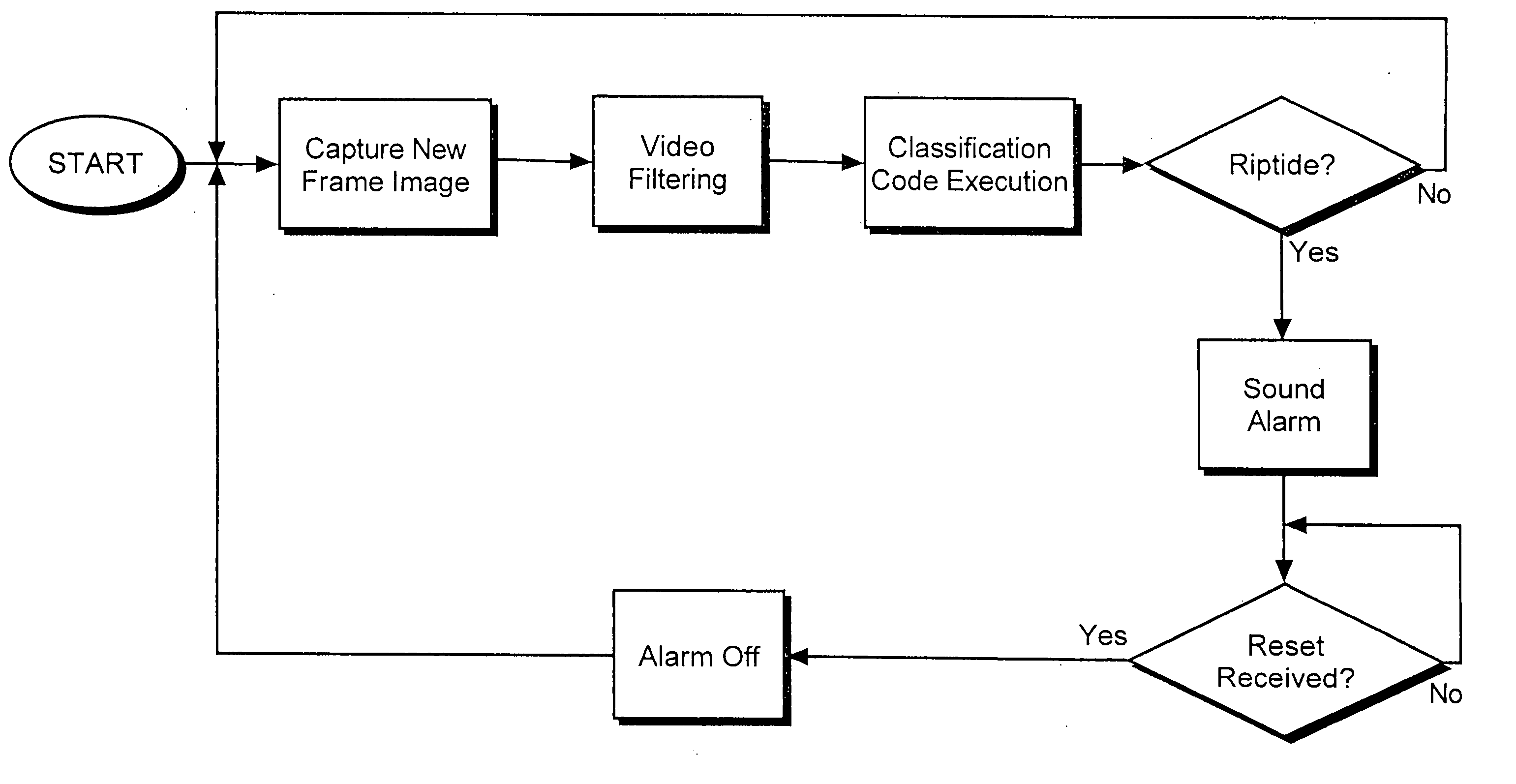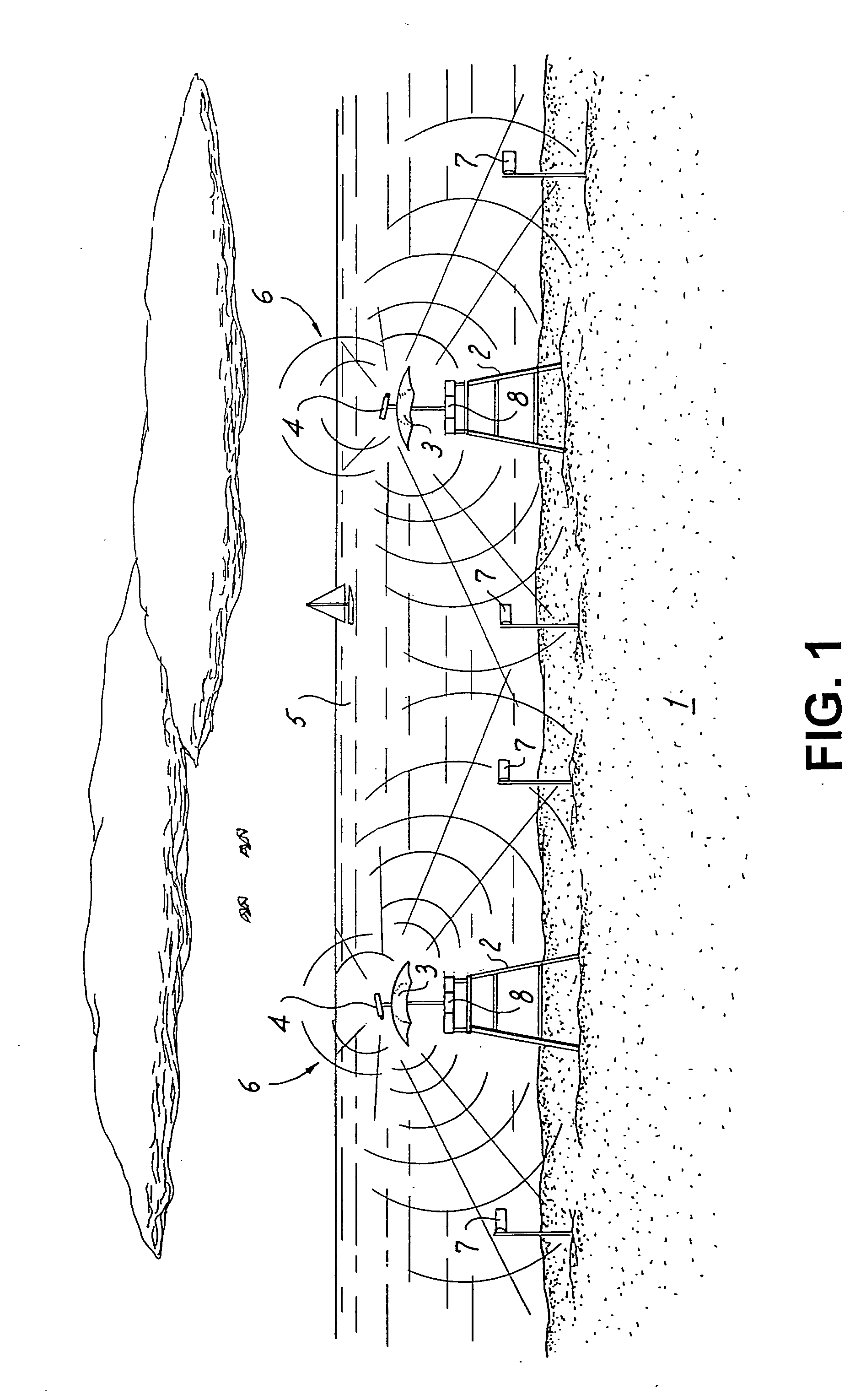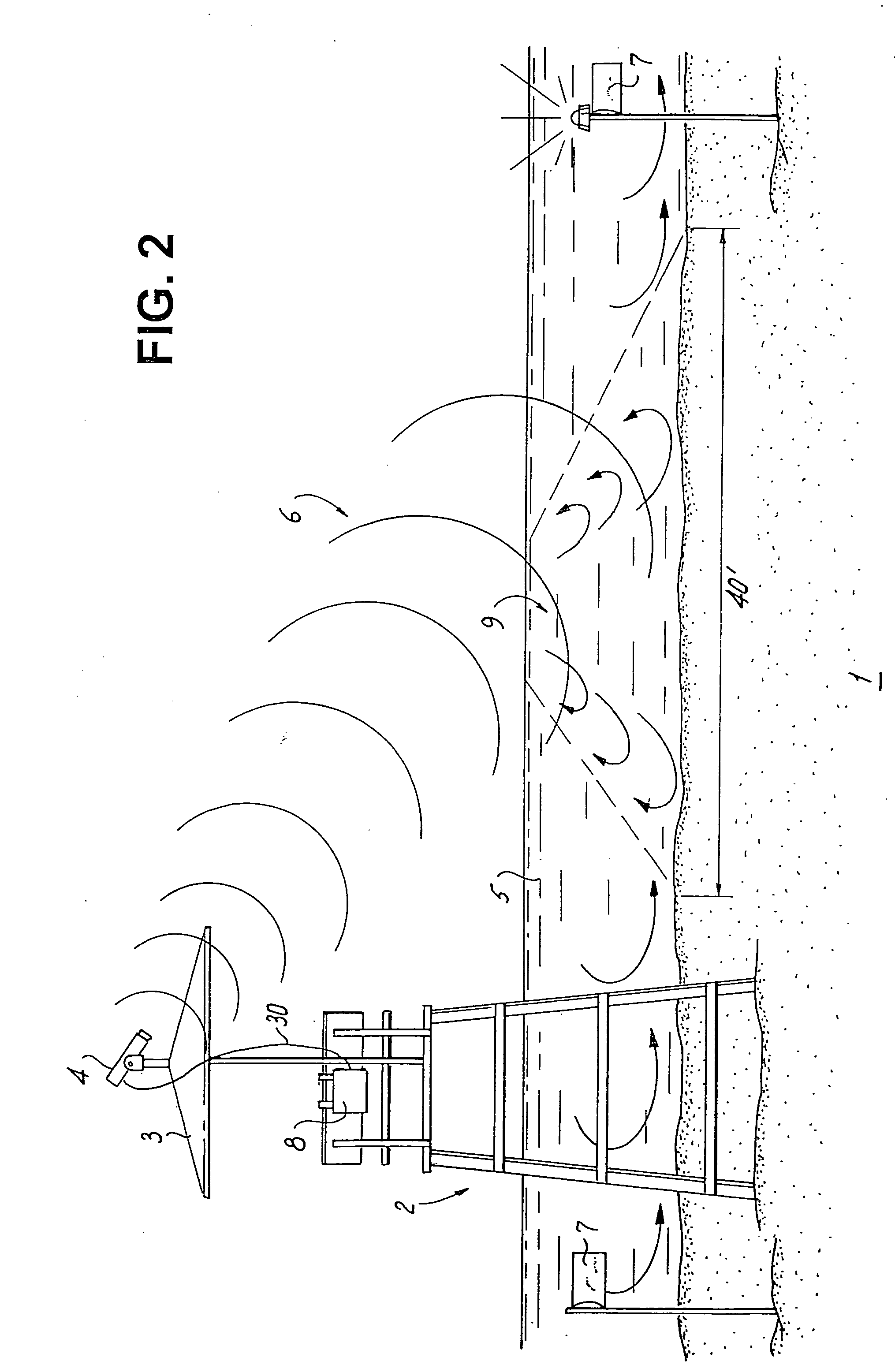Automated rip current detection system
- Summary
- Abstract
- Description
- Claims
- Application Information
AI Technical Summary
Benefits of technology
Problems solved by technology
Method used
Image
Examples
first embodiment
[0060] The overhead beach scene of FIG. 8 shows an enhanced rip current detection system of the first embodiment utilizing remote data streams received directly by each detector, such as an enhanced detection module 60, attached to an elevated support, such as lifeguard perch 2. Remote data streams are denoted schematically by lightning bolts 69. These data are generated by one or more multiple sensors on various sensor housing supports, such as fixed towers 61, on satellites 62, on autonomous UAV's 66 and on unmanned autonomous watercraft 67. Guidance systems for all manner of unmanned autonomous vehicles are now commonplace for military applications.
[0061]FIG. 8 also shows that by incorporating global positioning system (GPS) receivers in the unmanned vehicles and towers, each data packet is tagged with sensor location.
[0062]FIG. 9 is a block diagram of enhanced detection module 60. Note the added receiver, such as a multi-channel telemetry receiver 75, with appropriate data retr...
third embodiment
[0064]FIG. 11 shows enhanced system with a alternate detector, such as a streamlined detection module 90 now having a controller, such as low function controller 92 instead of a full-function analysis laptop 41. A power source, such as battery 94 or other photovoltaic device, can be reduced capacity as well; note that fan cooling is no longer required. Communications is preferably two-way via WLAN transceivers 95. The function of controller 92 is simply to receive alarm signals from central station 99, to transmit camera 4 data via WLAN 95 and / or to digitize speech signals from microphone 93 for transmission via WLAN 95. Controller 92 may also be used to compress data from camera 4 prior to transmission. Central station 99 preferably has master receiver 82 as in the previous embodiment, and it has a powerful master analysis computer 97 that performs hazardous rip current detection for all individual instrumented lifeguard perches 90. The software running in master analysis computer ...
PUM
 Login to View More
Login to View More Abstract
Description
Claims
Application Information
 Login to View More
Login to View More - R&D
- Intellectual Property
- Life Sciences
- Materials
- Tech Scout
- Unparalleled Data Quality
- Higher Quality Content
- 60% Fewer Hallucinations
Browse by: Latest US Patents, China's latest patents, Technical Efficacy Thesaurus, Application Domain, Technology Topic, Popular Technical Reports.
© 2025 PatSnap. All rights reserved.Legal|Privacy policy|Modern Slavery Act Transparency Statement|Sitemap|About US| Contact US: help@patsnap.com



